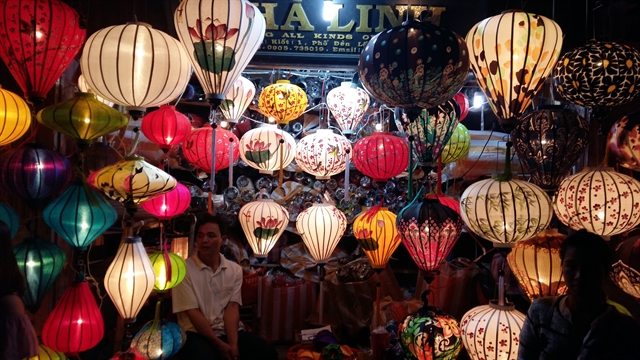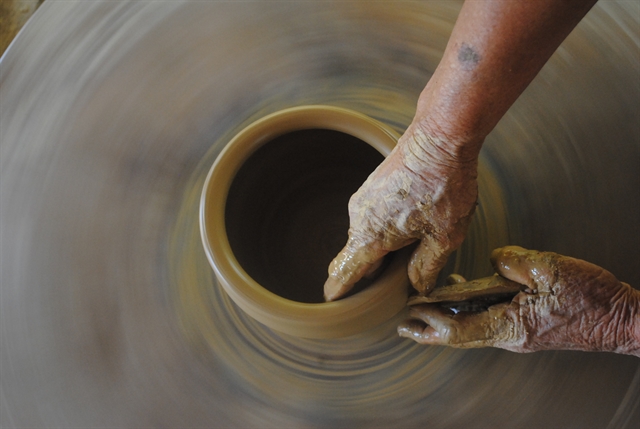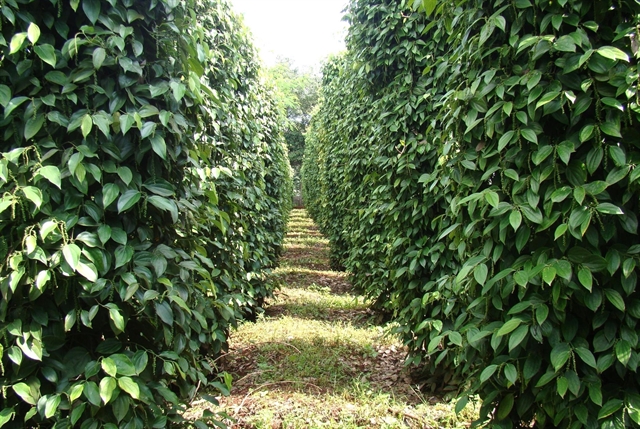 Life & Style
Life & Style

 |
| Võ Tấn Tân, a craftsman, is adorning a bicycle frame with bamboo in his personal workshop located in the Cẩm Thanh Commune, Hội An. The historic town is now a proud member of the UNESCO Creative Cities Network (UCCN), specifically in the Crafts and Folk Art category. — Photo courtesy of Sơn Ca |
HỘI AN — Following the official designation of 55 cities across the globe by UNESCO Director-General Audrey Azoulay on World Cities Day (October 31), the historic town of Hội An has now become a proud member of the UNESCO Creative Cities Network (UCCN) in the Crafts and Folk Art category.
The Information and Sports Centre of Hội An City has stated that relentless efforts have finally borne fruit, as the city of Hội An and its community have been extensively planning and preparing the necessary procedures and activities since the beginning of this year.
 |
| Lanterns at a shop in Hội An City. — VNS Photo Công Thành |
Đà Lạt City in the Central Highlands province of Lâm Đồng was the second city in Việt Nam to join the network, becoming a new member in the field of music.
 |
| A potter makes a jar from clay at the pottery village of Thanh Hà in Hội An City. The traditional craft is an attraction to tourists when visiting Hội An. — VNS Photo Công Thành |
In the press release on October 31, UNESCO said new cities were acknowledged for their strong commitment to harnessing culture and creativity as part of their development strategies, and displaying innovative practices in human-centred urban planning.
The network now counts 350 cities in more than 100 countries, representing seven creative fields: Crafts and Folk Art, Design, Film, Gastronomy, Literature, Media Arts and Music.
Newly designated cities will cooperate with network members to strengthen their resilience in the face of evolving threats such as climate change, rising inequality, as well as rapid urbanisation, with 68 per cent of the world’s population projected to live in urban areas by 2050, it said.
“The cities in our Creative Cities Network are leading the way when it comes to enhancing access to culture and galvanising the power of creativity for urban resilience and development,” said Audrey Azoulay, UNESCO Director-General.
 |
| Bài Chòi, a customary artistic performance, is staged in the Old Quarter of Hội An City every weekend, catering to the enjoyment of visitors. — Photo courtesy of Lê Sơn Ca |
The Centre for Cultural Heritage Management and Preservation in the city has reported that crafts and folk art are crucial elements that have been meticulously preserved and promoted by both the city and its community, with the establishment of five craft villages and the continuation of 50 traditional trades.
Local traditional crafts, which have been developed and honed in the town for centuries, continue to serve as a significant source of livelihood for numerous families and craftsmen, encompassing trades such as carpentry, terra-cotta, lantern-making, bamboo work, nipa-palm processing, garment production, and leather crafting.
Out of the five craft villages, three, along with one trade, have been bestowed the status of national intangible heritages. Meanwhile, the remaining two villages are in the process of compiling dossiers to seek recognition.
 |
| Tourists visit Trà Quế vegetable growing village in Hội An City. The garden village and herb plantation trade was recognised as a national intangible heritage. — Photo courtesy of EMIC |
Folk arts have been preserved as a consistent feature in traditional festivals and communal activities.
The centre has noted that there are 1,700 households and 685 small-scale enterprises engaged in crafts and the performance of folk arts. Approximately 4,000 labourers and craftsmen generate an annual average income ranging from US$3,500 to $4,000 through their involvement in folk arts performances and craft trades.
 |
| Two carpenters create wooden carvings at Kim Bồng carpentry village in Hội An. The trade contributes to community and tourism with its unique sculpture works. — Photo courtesy of Sơn Ca |
In 1999, UNESCO conferred world heritage status upon the Old Quarter of Hội An.
The Mid-Autumn Full Moon Festival, observed on the 14th day of the eighth lunar month in Hội An ancient town, received the latest National Intangible Heritage recognition in September. This added to a growing list of recognitions for the area, which includes the annual Nguyên Tiêu Festival of Hội An, Thanh Châu bird's nest, Thanh Hà Pottery Village, the carpentry trade of Kim Bồng Village, and the Trà Quế vegetable garden. — VNS




